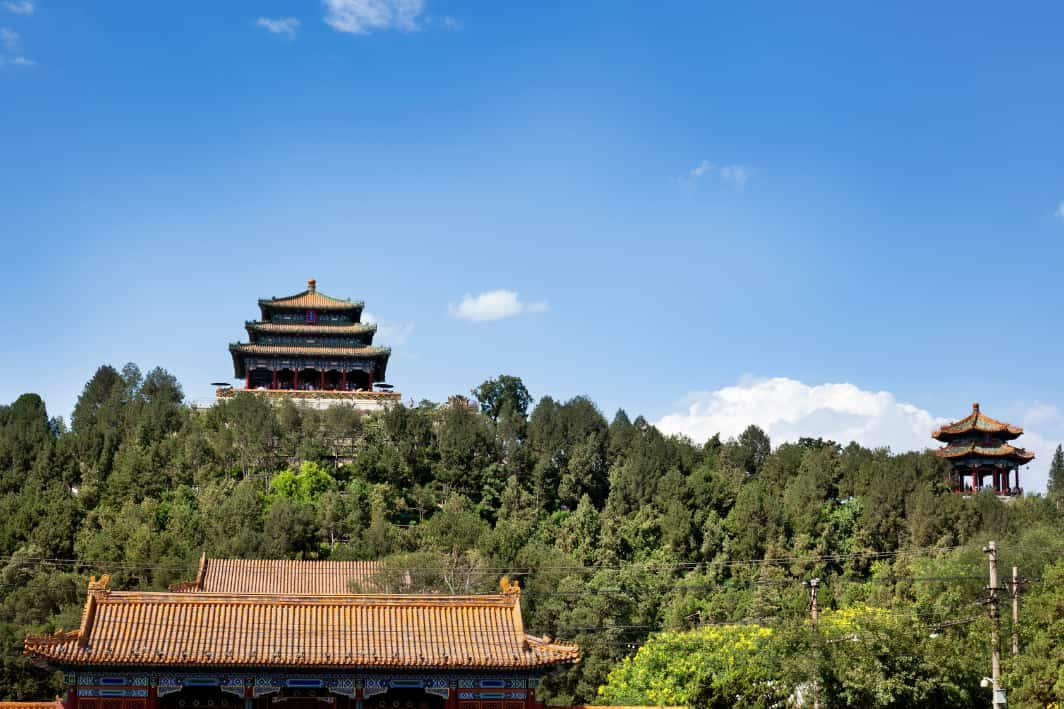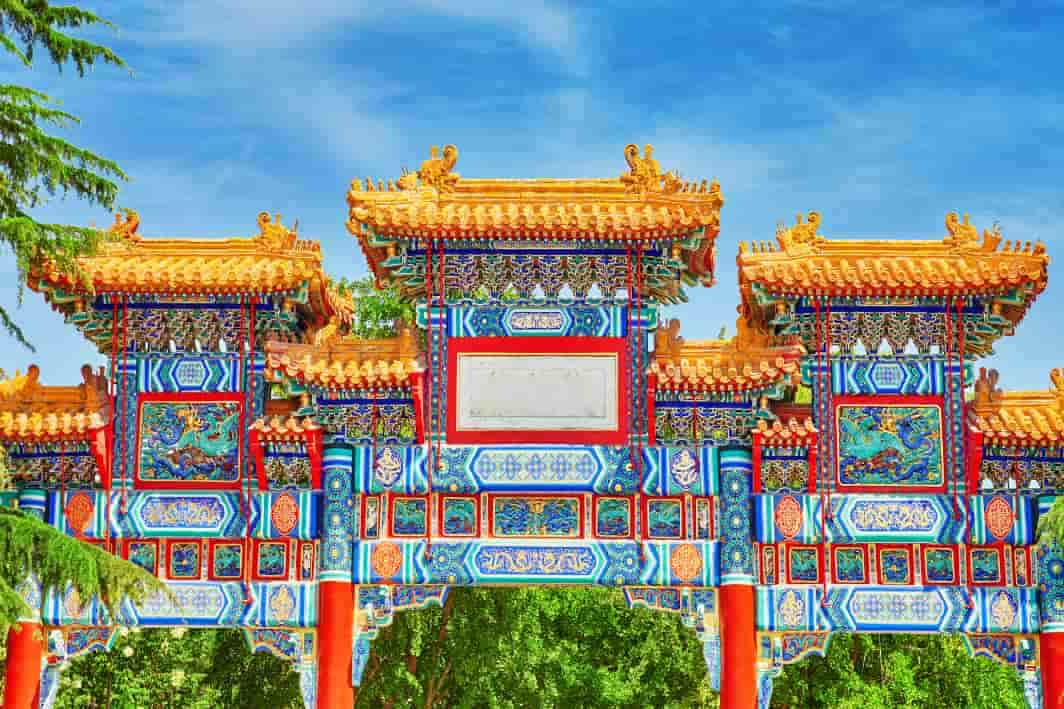
Best Places to visit in Beijing
Beijing, the capital city of China, is the second largest bustling city of the country, with a population of more than 22 million people. With winsome Chinese history, traditional and modern Chinese architecture, rich Chinese culture, natural surroundings of Beijing Parks, lovely vibes of the city, and much more this Chinese city has a perfect combination of ancient and modern wonders to discover. So, if you are planning a trip to this delightful city, take a glance through this complete list of best places to visit in Beijing and make your vacation memorable.
Forbidden City

Forbidden city, also known as The Imperial Palace, is undoubtedly, not only Beijing’s but China’s most significant attraction, which trace its origin back to the Yuan Dynasty of the 13th century. The main fact is, this largest and most beautiful palace had been home to 24 Ming and Qing Emperors, and it has earned its nickname of the Forbidden City since ordinary citizens weren’t allowed to enter this palace.
You will get to see traditional Chinese architectural styles here with the main Highlights being the Meridian Gate, built in 1420; the Golden River Bridges, which is a network of five richly decorated white marble bridges; and the Hall of Preserving Harmony, which operated as the emperor’s banquet hall. And there is more to explore.
The Temple of Heaven

Another iconic place and one of the largest sacred sites in China, which will catch your attention is the Temple of Heaven, also known as Tian Tan. It’s a lovely temple complex dating back to 1420, where emperors of the Ming and Qing dynasties thanked heaven for the good harvest. Temple of Heaven is a home to different buildings in its area of 273 hectares and make sure to explore some of the important buildings, that include:
- The temple of the Good Harvest (Qinian Dian), the striking blue circular building that symbolizes Heaven, where the emperor made the sacrifices on the Heavenly circular Altar in a solemn ceremony to pray for a good harvest.
- The Imperial Vault of Heaven (Huangqiong Yu), a blue-tiled conical roof and which was used to store the ceremonial elements of Heaven and the Officials. It is surrounded by the Echo Wall, a panel that produces amazing sound effects. Make sure that you explore this site.
- Hall of Abstinence, the building in which the emperor spent the night before the rituals, is a small recreation of the Forbidden City.
Summer Palace

Travel to the Summer Palace (Yíhé Yuán) which was used as an Imperial Garden by several dynasties that dates to the 12th century and became a pleasant refuge for the Qing dynasty, as they used to escape the hot summers of the Forbidden City.
Covering more than 290 hectares, the Summer Palace is a beautiful complex of lakes, gardens, palaces and countless temples. The main attractions where you can explore art is the western-styled “Marble Ship” (Shifang), the Hall of Well-being and Longevity (Renshou Dian) with its elaborate throne, and the attractive courtyard adjoining the Hall of Happiness and Longevity (Leshou Tang Hall). You can visit the impressive 19th century Great Theatre, where you can catch performances of traditional Chinese plays and music.
You can also get immersed in the local culture at Suzhou Street, a commercial street that was built under the orders of Emperor Qianlong, where you can shop for traditional items from small shops.
Great Wall of China

This name needs no introduction having the status of one of the Seven Wonders of the World and the most representative symbol of China, Wander through the first part of the Great Wall of China, at Badaling Pass, where you can enjoy a walk along an impressive section of the Great Wall dating from the 16th century and standing up to eight meters high.
Along the way, you will find plenty of towers and parapets, while getting immersed in the superb views over the surrounding dramatic scenery. After the first part, you can explore another popular spot of the Great Wall, which is Mutianyu, parts of which date back to the 6th century. Take in the magnificent views, which are particularly engaging during spring and autumn.
Add more fun to your Great Wall exploration with a visit to Gubeai Water Town, that is unbelievably charming. Here you will be absorbed in the natural mountain scenery with many quiet canal-side pedestrian-only streets.
Tiananmen Square

Tiananmen Square, also known as the Square of Heavenly Peace, is known for its wonderful political significance. The significant fact is, it was built to celebrate the 10th anniversary of the Chinese Republic in 1958 and considered the center of communist China. Also, the square’s symbolic importance dates to May 4th, 1919, when students demonstrated against the Chinese provisions of the Treaty of Versailles.
The main attractions of Tiananmen Square are the Monument to the People’s Heroes (Rénmín Yingxióng Jìniànbei), and the huge Tiananmen Gate, known as the Gate of Heavenly Peace and stands as the main entrance to the Imperial City. Besides there is Zhengyangmen, or Qianmen, the southernmost gate into Tiananmen Square, that dates back to the early 15th century.
Other highlights are the Military Museum of the Chinese People’s Revolution, where you will get the idea of history through the exhibits sharing information about the various stages of the Chinese Revolution from 1919. And there is the Mausoleum of Mao Zedong, also known as the Chairman Mao Memorial Hall, which holds the importance of the resting place of the body of Mao in a crystal sarcophagus.
Hutongs

Take in the beauty of Old Beijing during your afternoon wandering around the hutongs, which are narrow alleys between historic courtyard housing complexes. Here you will get a glimpse of the traditional life of the past. Spend your Afternoon walking or cycling through the unique collection of cafes, restaurants and shops, especially around the kooky Nanluoguxiang shopping street. And yes, make sure to stop and appreciate the ancient drum and bell towers, Gulou and Zhonglou.
Beihai Park

Take full advantage of Beijing vacation packages and visit Beihai Park, one of the gorgeous and the oldest surviving imperial gardens in Beijing (North Lake), founded at the beginning of the 10th century. The important highlights of the park include the Round Fort, dating from the Yuan period of 1271-1368, and the striking Hall of Enlightenment, built in 1690, that has a one-and-a-half meter-tall Buddha carved from a single block of white jade, and a large black jade vase from the early 12th century.
Other highlights include the huge residence of Song Qingling in which the widow of the founder of the Republic, Sun Yat-sen, lived for 18 years until her death and its now turned into a museum. Besides, there are Living Quarters of Mei Lanfang (Mei Lanfang Guju), a famous male star of the Peking Opera who specialized in playing the role of a woman. Also, explore the Guo Moruo Residence, designed in a Chinese courtyard style, where the famous writer and historian lived from 1963 until his death in 1978. Moreover, you can come across a beautiful 17th-century White Pagoda on the Exquisite Jade Flower Island.
Jingshan Park

Also known as Coal Hill Park, Jingshan will give some of the best views in Beijing, particularly over Beihai Park Lake and the Forbidden Palace. This Park holds great significance as it served as a royal garden and hunting ground during the Yuan, Ming and Qing dynasties, filled with fruit trees, pretty buildings and ornate palaces. Wander through these landscaped gardens, praising traditional Chinese architecture, and getting absorbed in the incomparable views. If you take a short climb up Jingshan Hill, you can’t resist a unique pleasant view up to the north gate of the Forbidden City.
Lama Temple (Yonghe)

Once the residence of a prince, also known as the Yonghe or the Lama Temple, it is one of Beijing’s most attractive and best-preserved temples. The interesting fact is this temple has been a working monastery since the 18th century and is one of the most valued Buddhist temples outside of Tibet.
The main attractions are, the Hall of the Kings of Heaven (Tian Wang Dian) with its statue of Buddha surrounded by the four kings who are provided with symbolic objects (a toad, sword, snake, and shield). Also noteworthy is the statue of Weituo, the protector of Buddhism, holding an iron staff.
Other main highlights are the important buildings of the Pavilion of the Four-tongued Stele (Yubi Ting), that contains the history of the Lama religion written in Chinese, Manchurian, Tibetan, and Mongolian and the Hall of the Buddhist Wheel (Falun Dian), the teaching and assembly hall of the monastery, having a six-meter-tall statue, two thrones, and numerous sacred manuscripts. Also, explore the largest building at the Lama Temple, the Pavilion of Four Thousand Fortunes (Wangfu Ge), with its enormous 18-meter-high sandalwood statue.
Wangfujing Street Market

Binge on some delicious local street snacks such as bing tanghulu (candied hawthorn), dou mian dan (glutinous rice rolls with sweet bean flour) and tanghou shao (sweetened baked wheaten cake) at the Wangfujing Street Market. The street becomes lively each evening filled with vendors and plenty of stalls. This vibrant market culture will satisfy you with the vibrant night market culture. You can also buy your favorite items from the department stores, souvenir shops and there all types of food ranging from McDonald’s to luxury restaurants.
In Conclusion
Apart from the above attractions, there are also some of the other best places to visit in Beijing, innumerable on the list that can be explored. Discover the charm of this Chinese city fully with Beijing holiday packages by TrekHops, where you will get the chance to get to explore some of the important cultural attractions, learn some important historical facts, practice spirituality at the temples, outdoor activities in parks and much more.
Q1 What are the top historical sites in Beijing?
Some of the top historical sites include the Great Wall of China, Temple of Heaven, Tiananmen Square, Forbidden City and lots more.
Q2 Which cultural attractions are a must-see in Beijing?
Some of the cultural attractions include Hutongs, Lama Temple, Suzhou Street of Summer Palace, etc.
Q3 What are the best parks to visit in Beijing?
Some of the best parks include Beihai Park, Jingshan Park, park of Temple of Heaven and more.
Q4 Where can I find authentic Beijing cuisine?
You can binge on local cuisine at Wangfujing Street Market.
Q5 When is the best time to visit Beijing’s tourist spots?
Spring from April to May and Autumn from September to October is the best time to explore Beijing’s tourist spots.
Latest Blogs
- Affordable Package Deals to London for USA Travelers: Plan Your Perfect Trip
- Exploring the Windy City: Best Chicago Tour Packages for Couples
- Top Destinations for Last Minute Vacation Packages: Explore the Best Deals
- Family Fun in Dubai: A Guide to Family-Friendly Vacation Packages
- Budget-Friendly Chicago Vacation Packages for Every Type of Traveler
- Guide to Saint Martin: Luxury Resorts, Top Beaches, Cuisine, and Must-See Attractions
- Ultimate Guide to Salt Cay: Luxury Resorts, Top Beaches, Cuisine, and Must-See Attractions


